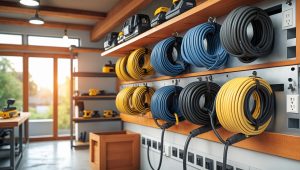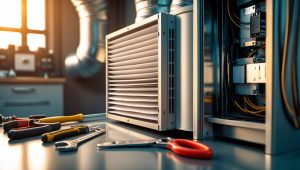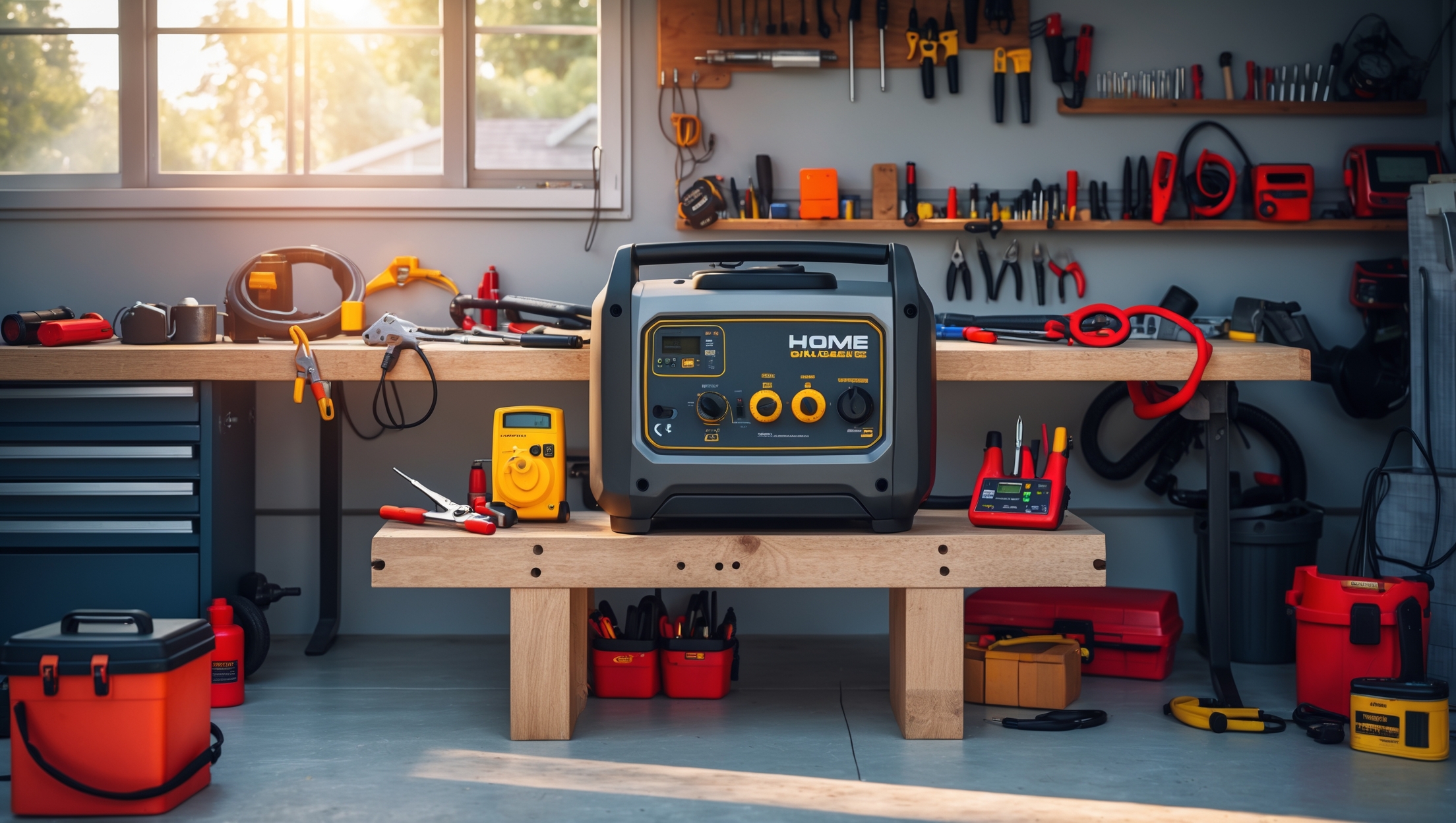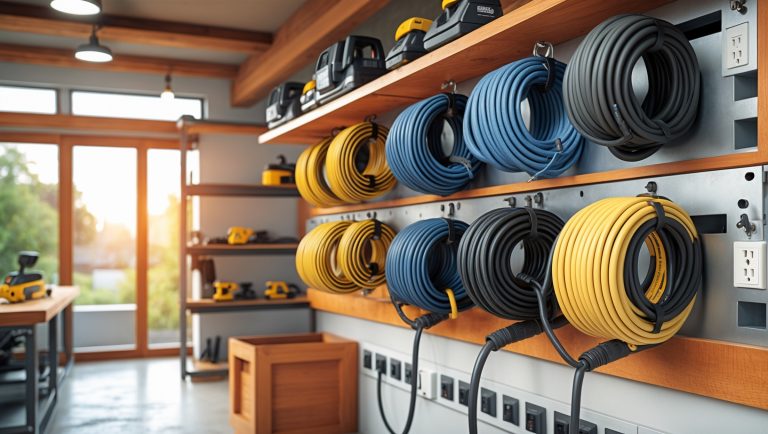Introduction: Why Home Generator Maintenance Matters
Home generators have become an essential fixture for many households, providing backup power during outages and ensuring that life goes on uninterrupted. But simply installing a generator isn’t enough—you need to take proactive steps to keep it in peak condition. Regular maintenance not only extends your generator’s lifespan but also guarantees safe, reliable operation when you need it most. Neglecting upkeep can result in costly repairs, unexpected breakdowns, or even dangerous malfunctions. In this comprehensive guide, we’ll walk you through everything you need to know about maintaining your home generator: choosing the right maintenance tools, establishing an effective schedule, performing critical checks, and following safety best practices. Whether you own a portable or standby unit, these expert tips will help you get the most out of your investment, avoid common pitfalls, and stay prepared for power emergencies.
Understanding Your Home Generator: Types and Maintenance Needs
Portable vs. Standby Generators
Home generators come in two primary categories: portable and standby (also called whole-house) units. Portable generators are smaller, mobile, and typically run on gasoline or propane. They’re ideal for short-term outages and can power select appliances. Standby generators are permanently installed, connected to your home’s electrical system, and usually run on natural gas or propane. They start automatically during power loss and can support the entire house.
- Portable Generators: Require frequent manual maintenance, including fuel checks and oil changes after each use.
- Standby Generators: Need scheduled professional inspections but also benefit from DIY maintenance between service intervals.
Key Maintenance Differences
While both types share basic maintenance principles—like oil changes, filter replacements, and battery checks—the frequency and complexity of tasks differ. Knowing your generator’s type and manufacturer’s recommendations is the first step in building a smart maintenance plan.
Essential Tools and Supplies for Generator Maintenance
Must-Have Hand Tools
- Socket Set: For removing panels, spark plugs, and fasteners.
- Wrenches (metric and standard): Used for bolts and connections.
- Screwdrivers (flathead and Phillips): For access panels and electrical covers.
- Oil Drain Pan: To collect old oil during changes.
- Funnel: For spill-free fluid refills.
- Pliers: Useful for hose clamps and electrical work.
Electrical Testing Equipment
- Multimeter: To check battery voltage and test electrical continuity.
- Battery Load Tester: Ensures your starting battery is in good health.
Consumables & Replacement Parts
- Engine Oil: Check your model’s guidelines for type and quantity.
- Replacement Oil and Air Filters: Essential for routine swaps.
- Spark Plugs: Keep spares on hand for quick replacements.
- Fuel Stabilizer: Prevents fuel degradation during storage.
- Cleaning Supplies: Rags, degreaser, and compressed air.
Personal Protective Equipment (PPE)
- Nitrile or Mechanic’s Gloves: Protects your hands from oil and grime.
- Safety Glasses: Shields eyes from splashes and debris.
- Hearing Protection: For running test cycles.
Developing a Maintenance Schedule: What to Check and When
Pre-Season and Monthly Checks
Before storm season or anticipated outages, perform a thorough inspection. Monthly visual checks are key for both portable and standby generators, especially if you live in an area prone to severe weather.
- Inspect the generator for leaks, corrosion, or rodent damage.
- Check fuel and oil levels.
- Ensure all electrical connections are tight and corrosion-free.
- Run the generator for 10-15 minutes under load to ensure proper operation.
Quarterly Tasks
- Change or clean the air filter.
- Inspect and clean spark plugs.
- Test and charge the battery (standby generators).
- Check exhaust systems for obstructions or leaks.
Annual or 100-Hour Maintenance
- Change engine oil and oil filter.
- Replace spark plugs if they show wear.
- Inspect belts and hoses for cracks or deterioration.
- Drain old fuel and add fresh, stabilized gasoline (portable generators).
- Flush and refill coolant if your model is liquid-cooled.
Pro Tip: Document Everything
Keep a maintenance log with dates, performed tasks, and any issues identified. This record is invaluable for warranty claims and troubleshooting future problems.
Step-by-Step: Performing Critical Generator Maintenance Tasks
1. Oil Change Procedure
- Warm up the generator for 5 minutes to thin the oil.
- Turn off, disconnect from power, and allow to cool briefly.
- Remove the oil drain plug and drain oil into a pan.
- Replace the oil filter if equipped.
- Install drain plug, refill with recommended oil (using a funnel), and check the dipstick.
- Run the generator briefly and check for leaks.
2. Air Filter Cleaning/Replacement
- Remove the air filter cover.
- Wash foam filters with soapy water, dry thoroughly, and lightly oil before reinstalling.
- Replace paper filters as needed.
- Reinstall cover securely.
3. Spark Plug Inspection
- Remove spark plug using a socket.
- Inspect for soot, wear, or cracks.
- Set the gap to spec (usually 0.028–0.031 inches, check your manual).
- Replace if excessively worn or fouled.
- Reinstall and torque to manufacturer’s spec.
4. Battery Testing (for Standby Models)
- Disconnect battery terminals, clean with a wire brush.
- Check voltage with a multimeter (should be 12.4–12.7V for most units).
- Load test battery if voltage is low.
- Charge or replace as necessary.
5. Fuel System Care
- Inspect fuel lines for cracks or leaks.
- Add fuel stabilizer to gasoline tanks prior to storage.
- Drain and replace old fuel every 6–12 months.
Advanced Tips: Troubleshooting and Preventive Measures
Diagnosing Common Problems
- Hard Starting or No Start: Check battery, spark plug, and fuel quality.
- Rough Running: Clean carburetor jets, replace air filter, and inspect fuel lines.
- Low Power Output: Verify load capacity, check for electrical shorts, and clean generator brushes if accessible.
- Excessive Noise or Vibration: Inspect mounting pads, tighten bolts, and check for exhaust leaks.
Preventive Upgrades
- Install a battery maintainer to keep standby unit batteries topped up.
- Add an hour meter to track runtime between maintenance intervals.
- Use a weatherproof cover for portable generators stored outdoors.
Safety Checklist: Protecting Yourself and Your Equipment
- Always operate generators outdoors in a well-ventilated area—never indoors or in attached garages (risk of carbon monoxide poisoning).
- Turn off and cool the generator before performing maintenance.
- Disconnect spark plug wire or battery cable to prevent accidental starting.
- Wear appropriate PPE: gloves, safety glasses, and hearing protection.
- Keep flammable materials away from the generator and fuel storage area.
- Dispose of used oil and filters at approved recycling centers.
- Check local codes for proper installation and grounding of standby units.
Maintenance Myths Debunked
- “Generators are maintenance-free.”—All generators require regular attention to operate safely and reliably.
- “I only need to check the generator during outages.”—Routine testing and upkeep prevent failures when you need backup power most.
- “Old gasoline is fine as long as it starts.”—Aged fuel can damage carburetors and reduce performance, even if the engine runs.
- “Professional service is always required.”—Many key tasks are straightforward DIY jobs if you have the right tools and follow safety guidelines.
Budgeting for Generator Maintenance: What to Expect
Routine Costs
Annual maintenance for a typical portable generator costs $30–$100 in parts and fluids, while standby generators may cost $150–$300, depending on brand and complexity. Professional service visits (recommended yearly for standby units) can add $150–$400, but doing basic tasks yourself will save money.
Long-Term Savings
Timely maintenance prevents expensive repairs and extends generator life, reducing the likelihood of emergency service calls or premature replacement. Investing in a comprehensive tool kit and quality fluids pays for itself in reliability and peace of mind.
Conclusion: Stay Powered, Stay Prepared
Home generators are a lifeline during unexpected outages, but their reliability hinges on regular, informed maintenance. By investing in the right tools, following a practical schedule, and adhering to proven safety protocols, you can ensure your generator is always ready when you need it. Don’t wait for the next storm or grid failure to discover a faulty spark plug or a dead battery—take action today. Keep a detailed maintenance log, stock up on essential replacement parts, and establish a habit of regular checks. Not only will you save money on repairs, but you’ll also extend your generator’s lifespan and maximize your investment’s value.
Remember: generator maintenance isn’t just about convenience—it’s about protecting your home, your comfort, and your safety. With these best practices, you’ll have the confidence that your backup power source will perform flawlessly, no matter what nature throws your way.











Could you explain what specific tools are necessary for routine maintenance on a standby generator versus a portable one? I want to put together a toolkit but I’m not sure if I need different items for each type.
For both standby and portable generators, you’ll need basic tools like a socket set, screwdrivers, pliers, an oil filter wrench, funnel, rags, and a multimeter. For standby generators, add a torque wrench (for checking connections) and possibly specialty tools based on your model’s maintenance manual. Portable generators often need spark plug wrenches and a fuel stabilizer. While there is overlap, standby units can require more specialized items due to their complexity, so it’s a good idea to review your generator’s manual for any unique tools recommended by the manufacturer.
Are there any significant cost differences in maintaining a portable versus a standby generator over several years, especially when you factor in tools, replacement parts, and professional service needs?
Yes, there are notable cost differences. Maintaining a standby generator typically costs more over several years than a portable one. Standby generators often require professional servicing, more expensive replacement parts, and sometimes specialized tools. Portable generators are simpler, so many users handle basic maintenance themselves, lowering costs. However, the exact difference depends on usage frequency and local service rates, but generally, expect higher expenses for standby models.
Can you clarify how often I should actually schedule professional inspections for a standby generator, and are there any DIY checks I should be doing between those visits to avoid unexpected breakdowns?
You should aim to schedule a professional inspection for your standby generator once a year, ideally before storm or peak usage seasons. Between these visits, check the oil level, coolant, and battery monthly, inspect for leaks or corrosion, and make sure the generator runs smoothly during its weekly self-test. Keeping the area around your generator clear is also important to ensure proper ventilation.
I noticed you said portable generators need oil changes after each use. Is there a general rule for how many hours of operation counts as a ‘use,’ or does it depend on the model?
The number of hours that counts as a ‘use’ can depend on the generator model and the manufacturer’s recommendations. However, a common guideline is to change the oil after the first 20-30 hours of operation, and then every 50-100 hours after that, or once per season if used infrequently. Always check your owner’s manual for the most accurate maintenance schedule.
When choosing maintenance tools for a standby generator, are there any budget-friendly essentials I should prioritize, or do most tasks just require standard household tools?
Most basic maintenance tasks for a standby generator can be done with standard household tools like screwdrivers, wrenches, and pliers. For budget-friendly essentials, consider adding a multimeter for electrical checks and a spark plug socket if your generator uses spark plugs. It’s also smart to have oil and air filter wrenches on hand, but these are usually affordable and widely available.
I’m curious if the maintenance costs are significantly different between portable and standby generators over time. Does investing in a standby unit end up saving money on repairs and upkeep, or are the ongoing expenses about the same as with a portable option?
Ongoing maintenance costs for standby generators are generally higher than for portable units, mainly due to more complex systems and professional servicing requirements. However, standby generators tend to be more durable and reliable over the long term, which can reduce the frequency and cost of major repairs. While you might pay more upfront and for scheduled maintenance, standby units often require fewer emergency repairs compared to portables. If reliability and long-term performance are priorities, a standby generator could justify the higher maintenance investment.
If I have a limited budget and can’t afford a professional inspection as often as recommended for standby generators, which maintenance tasks should I prioritize to keep my generator reliable in an emergency?
If your budget is tight, focus on key tasks like checking and changing the oil, replacing air and fuel filters, inspecting the spark plug, and keeping the generator clean and free of debris. Also, run the generator periodically to ensure it starts smoothly. These basics can help maintain reliability until you’re able to schedule a professional inspection.
I’m worried about forgetting routine maintenance—are there any tools, apps, or systems you recommend for keeping track of generator maintenance schedules so I don’t miss important service dates or tasks?
To help you stay on top of generator maintenance, consider using calendar apps like Google Calendar or Apple Reminders to set recurring alerts for tasks. There are also dedicated maintenance tracking apps, such as MaintainX or UpKeep, that let you log services and set reminders. You can also use a simple spreadsheet to list tasks and dates, then check them off as you go.
Could you explain more about the maintenance intervals for portable vs. standby generators? I’m trying to set up a realistic schedule and would like to know how often each type should have its filters and oil changed under typical home usage.
For portable generators used at home, oil should typically be changed every 50–100 hours of use or at least once per season, while air filters should be checked every 25 hours and replaced as needed. Standby generators, on the other hand, often have longer intervals—oil and filters are usually changed every 100–200 hours or annually, whichever comes first. Always double-check your model’s manual, but these guidelines fit most home setups.
When it comes to oil changes on a portable generator, do you recommend using synthetic oil or is conventional oil just as good for keeping the generator running smoothly? I’ve heard mixed advice and would like some practical input for routine maintenance.
Both synthetic and conventional oils can keep a portable generator running smoothly, but synthetic oil generally offers better protection, especially in extreme temperatures and during extended use. Synthetic oil resists breakdown longer and can help your generator start more easily in cold weather. However, always check your owner’s manual, as some models may specify a preferred oil type. For routine maintenance, changing the oil at the recommended intervals is more important than the specific type you choose, as long as it meets the manufacturer’s specifications.
I noticed the article talks about different types of generators and how their maintenance needs vary. For someone on a tight budget, is there a big difference in long-term maintenance costs between portable and standby generators?
Portable generators generally have lower long-term maintenance costs compared to standby generators. Portable models are simpler, with fewer parts and less complex systems, so routine checks and repairs tend to be less expensive. Standby generators, while more convenient for automatic backup, require regular professional servicing and have higher upfront and ongoing costs. For budget-conscious users, a portable generator can be more economical to maintain over time.
With a busy schedule, I sometimes struggle to keep up with maintenance tasks. Is there a simple routine or checklist for portable generators that balances effective upkeep with limited time, especially during storm season?
Absolutely, a simple routine can make generator maintenance manageable even with a busy schedule. Focus on key tasks: check and top off the fuel and oil levels monthly, inspect the air filter and clean if needed, test-run the generator for 10-15 minutes every month, and ensure extension cords and connections are in good shape. Before storm season, double-check the battery (if electric start), and keep extra fuel safely stored. This quick checklist helps ensure reliability without taking up too much time.
The article mentions that portable generators require oil changes after each use. Does that apply even if you only ran the generator for a short time, or is there a recommended number of hours before an oil change is really necessary?
You don’t need to change the oil after every short use. Most portable generators have a recommended oil change interval based on hours of operation—typically after the first 20–30 hours, then every 50–100 hours after that, depending on the manufacturer’s guidelines. Always check your owner’s manual for the specific schedule for your model.
If a standby generator is professionally inspected on schedule, what are the main DIY maintenance tasks homeowners should still do between those visits to avoid problems during an outage?
Between professional inspections, homeowners should regularly check and top off fuel and oil levels, visually inspect for leaks or corrosion, clean debris from around the generator, and test start the unit about once a month. Also, inspect and replace air filters as needed, and make sure the battery terminals are clean and secure. These steps help ensure your generator will work reliably during an outage.
I noticed you distinguish between professional inspections and DIY maintenance for standby generators. Could you give an example of what tasks should always be left to a professional versus what an average homeowner can safely handle themselves?
Professional tasks for standby generators include checking and adjusting voltage output, inspecting internal wiring, and testing transfer switches—these require specialized knowledge and tools. Homeowners can safely handle checking oil and coolant levels, cleaning or replacing air filters, inspecting for visible leaks, and keeping the area around the generator clear of debris. If you ever notice unusual noises or warning lights, it’s always safest to contact a professional.
I have a standby generator that was professionally installed, but I handle some maintenance myself in between service visits. What are the most critical DIY checks I shouldn’t skip to avoid unexpected breakdowns?
To help prevent unexpected generator breakdowns, focus on checking the oil level and condition, inspecting the air filter, keeping the battery terminals clean, and running the generator regularly to ensure it starts smoothly. Also, clear debris from vents and around the unit, and listen for unusual noises during operation. Always follow safety procedures and consult your manual for specific intervals.
You mention that portable generators need oil changes after each use—does that mean every single time I use it, even for short periods, or is there a certain number of hours between changes? Just want to make sure I’m not doing unnecessary maintenance.
You don’t need to change the oil after every single use, especially if you only run your portable generator for a short period. Most manufacturers recommend changing the oil after the first 20–30 hours of use, and then every 50–100 hours after that, or at least once per season. Always consult your owner’s manual for the specific interval for your model.
The article mentions that portable generators require oil changes after each use. Does this mean after every single power outage, even if it was just for a few hours, or is there a minimum run-time threshold?
You don’t need to change the oil after every short use. Most portable generators require an oil change after about 20–50 hours of operation, depending on the manufacturer’s recommendations. If your generator only ran for a few hours, just check the oil level and quality. Change the oil after longer periods of use or as specified in your owner’s manual.
If I’m on a budget and considering whether to buy a portable or standby generator, does the ongoing maintenance cost or time commitment usually differ significantly between the two? I’d like to understand the long-term upkeep before making a purchase.
Portable generators generally have lower maintenance costs and require less time to service compared to standby generators. With portables, you’ll mostly handle basic oil changes, air filter cleaning, and occasional spark plug checks. Standby generators, on the other hand, need more complex regular servicing, sometimes by professionals, which can add to long-term costs and time. If budget and ongoing upkeep are big factors, a portable model is usually the more manageable option.
If I just got a standby generator installed, how often should I schedule professional inspections versus doing the routine DIY checks myself? Are there certain tasks that definitely require a pro?
For a new standby generator, routine DIY checks like inspecting oil levels, checking for leaks, and clearing debris should be done monthly. Professional inspections are generally recommended once a year, or twice if you use the generator frequently. Tasks like electrical testing, valve adjustments, and warranty-related servicing should always be handled by a licensed technician to ensure safety and compliance.
The article says standby generators need professional inspections but also benefit from DIY maintenance. What tasks are safe for homeowners to do themselves between service visits, and which should be left to a technician?
Homeowners can safely handle tasks like checking and changing the oil, cleaning or replacing air filters, inspecting and replacing spark plugs, and keeping the generator clean and free of debris. Regularly running the generator to keep it in good condition is also a good DIY task. However, anything involving electrical systems, fuel system repairs, or major internal components should be left to a qualified technician during professional inspections.
For a small business that uses a standby generator as backup for critical equipment, how often should I schedule professional inspections versus handling routine checks myself? Are there certain tasks you definitely recommend leaving to the pros?
For a small business relying on a standby generator, you should handle basic tasks like checking oil, filters, and battery status every month. Schedule professional inspections at least once or twice a year, as experts should perform in-depth servicing, electrical testing, and load bank tests. Leave anything involving complex electrical systems, fuel adjustments, or major repairs to licensed professionals to ensure safety and compliance.
The article mentions that portable generators need oil changes after each use. Can you clarify what counts as a single ‘use’? For instance, if I run my generator for two days during an outage, does that mean I need to change the oil twice?
A ‘use’ refers to a complete period of operation, not each time you start and stop the generator. If your generator runs continuously for two days during an outage, that’s considered one use, not two. You only need to change the oil after that extended running period, rather than after each day. Always check your owner’s manual for the recommended oil change intervals based on hours of operation, as some models specify changes every set number of hours instead of after each use.
For someone on a tight budget, is it possible to handle most of the generator maintenance yourself, especially for a standby unit, or are there certain professional inspections that simply can’t be skipped?
You can definitely handle many basic maintenance tasks yourself, like checking oil levels, replacing air filters, and testing the unit regularly—these are cost-effective and straightforward. However, it’s wise to have a professional inspect your standby generator at least once a year, especially for electrical and fuel system checks. Some manufacturer warranties also require periodic professional service to remain valid.
You mentioned that neglecting generator upkeep can cause dangerous malfunctions. Can you elaborate on some specific safety risks homeowners should look out for if they fall behind on maintenance tasks?
When generator maintenance is neglected, carbon monoxide leaks from fuel or exhaust issues can become a significant hazard. Wiring or fuel system problems may also increase the risk of electrical shocks or fires. Additionally, clogged filters or worn parts might cause the generator to overheat or fail during emergencies, leaving you without power when you need it most. Regular inspections help prevent these risks.
For someone on a tight budget, are there maintenance tools or tasks you recommend prioritizing to keep a home generator running reliably without spending too much upfront?
For those on a budget, prioritize basic maintenance tools like a socket set, spark plug wrench, and oil filter wrench. Key tasks to focus on are regularly checking and changing the oil, cleaning or replacing the air filter, and inspecting the spark plug. These actions can be done with minimal investment and go a long way in keeping your generator reliable.
I’m a bit unsure about how often standby generators need professional inspections versus what I can handle myself. Is there a general timeline or checklist for the DIY tasks between service intervals that you recommend?
Professional inspections for standby generators are usually recommended once a year, but you can handle basic DIY tasks more frequently. Each month, check the oil level, inspect for leaks, and ensure the battery connections are clean. Run the generator briefly to keep parts lubricated. Every few months, clean or replace air filters and clear debris from around the unit. Always refer to your manufacturer’s manual for specific guidelines, but this basic schedule covers most needs between annual services.
I have a portable generator and noticed you mentioned oil changes should be done after each use. Does this apply even if I only use the generator for a short outage, or is there a minimum number of hours it needs to run before an oil change is necessary?
You don’t need to change the oil after every single use if your generator only runs for a short period. Most manufacturers recommend an oil change after about 20 to 50 hours of use, or at least once per season. Check your owner’s manual for the exact interval, as it can vary by model. Always check the oil level before each use and top up as needed.
For someone on a tight budget, are there any essential generator maintenance tools that you recommend starting with, or can basic household tools cover most of the routine checks and tasks described in the article?
Basic household tools like a wrench set, screwdrivers, pliers, and a flashlight are usually enough for most routine generator maintenance tasks, such as checking oil levels, tightening connections, and cleaning air filters. As you become more familiar with maintenance, you might consider adding a multimeter for electrical checks and a spark plug socket, but these aren’t strictly necessary to start. Focus on regular inspections and keeping the generator clean for now.
Are the maintenance tools for portable and standby generators the same, or will I need to buy different equipment depending on the type? I don’t want to overspend if the essentials overlap.
Many maintenance tools, like oil filters, spark plug wrenches, and fuel stabilizers, are used for both portable and standby generators. However, some tools may differ based on the generator’s size and features. For example, standby generators might require specialized tools for battery maintenance or automatic transfer switch checks. Start with the basics and check your generator’s manual for any model-specific tools before purchasing anything extra.
If I’m doing DIY maintenance on a standby generator between professional inspections, what safety precautions should I prioritize, especially since it’s connected to natural gas? Are there tasks that are better left strictly to pros?
When maintaining your standby generator, always turn off the unit and shut off the gas supply before starting any work. Avoid working on gas lines, electrical wiring, or the transfer switch—these should be handled by licensed professionals due to safety risks. Stick to basic tasks like checking and replacing filters, inspecting for leaks, and keeping the area clean. If you ever smell gas or notice unusual noises, contact a professional immediately.
Could you explain which tools are absolutely essential for DIY maintenance on both portable and standby generators, especially if I want to avoid unnecessary purchases?
For essential DIY maintenance on both portable and standby generators, focus on a few reliable tools: a socket and wrench set (for removing covers and spark plugs), a spark plug gap tool, oil filter wrench, funnel, clean rags, and a multimeter for basic electrical checks. These should cover most routine tasks like oil changes, filter replacements, and battery checks without overbuying. Specialized tools beyond these are rarely needed unless you’re doing advanced repairs.
You mention that portable generators need oil changes after each use, but if I only run mine for a couple hours during an outage, is a full oil change still necessary every time? What’s a practical maintenance interval for occasional use?
If you only use your portable generator for a couple of hours during an outage, you don’t need to change the oil after every use. For occasional use, it’s practical to change the oil after about 20 to 30 hours of run time, or at least once per season. Always check the oil level before each use and top it off as needed. Refer to your generator’s manual for any brand-specific recommendations.
I’m curious about portable generators—you mentioned oil changes after each use. Does that mean after any period of use, no matter how short, or only after longer periods like running it overnight?
For portable generators, you don’t need to change the oil after every brief use. The recommendation is generally for longer periods of operation, such as running it continuously overnight or for several hours. If you only use the generator for a short period, check the oil level and condition, but a full oil change can wait until you reach the manufacturer’s suggested running hours—often every 20-50 hours of use.